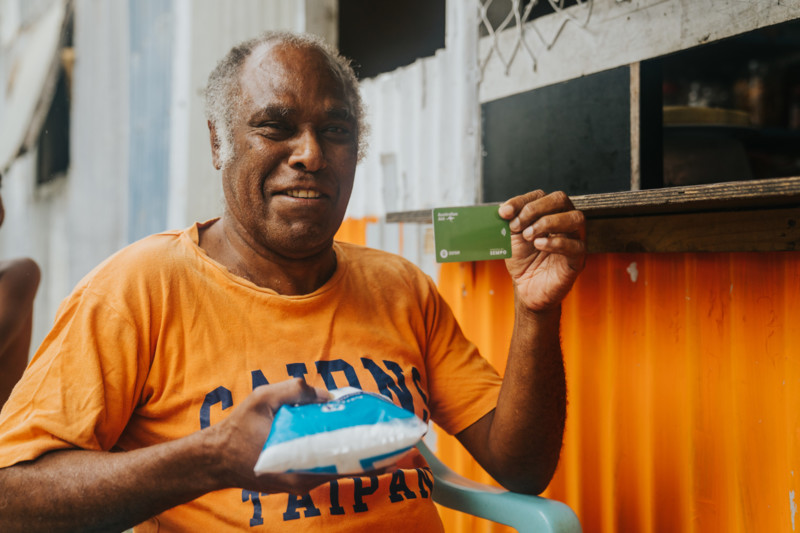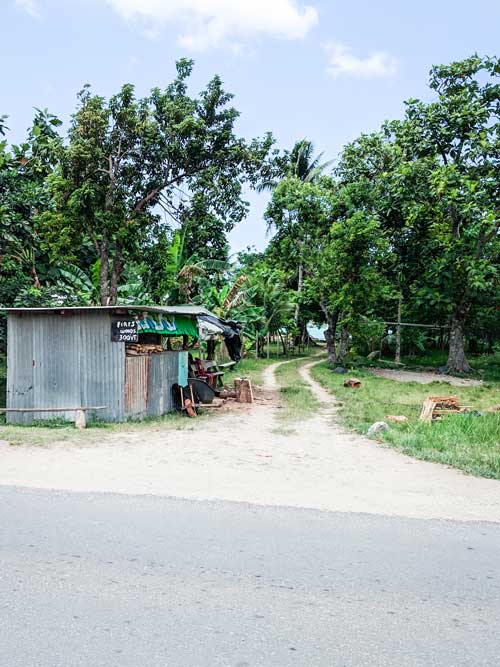Oxfam’s Unblocked Cash project is just the beginning. Let’s take the Vatu to the digital level.
Blockchain-based digital money has been around for about a decade but, due to the sheer volatility of cryptocurrencies like Bitcoin, it’s still often viewed as an obscure geek hobby, or at best some form of online gambling.
But all blockchain currencies are not created equal. “Stablecoins”, for example, have been created specifically to address issues of volatility and are garnering interest around the world for their potential benefits in replacing or complementing physical money. Other forms of blockchain tokens are reaching outside the boardrooms of tech start-ups and demonstrating their real-life potential for mainstream use, without the risks associated with cryptocurrencies.
No need look further than our own shores for proof. Starting in October this year, residents of Sanma affected by Cyclone Harold can use digital tokens to buy relief goods through Oxfam’s Unblocked Cash project, a partnership with the Vanuatu Business Resilience Council, Australian fintech Sempo and a consortium of 12 local and international NGO and private sector partners.

Ready money
Instead of donations in cash, which in the past have proven expensive and cumbersome, aid recipients are provided with an NFC card topped up with digital tokens. Local shopkeepers are issued a mobile phone with an app to process payments. All tokens loaded into the blockchain by Oxfam are collaterized by actual Vatus deposited at the Reserve Bank of Vanuatu. All transactions are traced in a digital ledger, making it easy to pay back vendors quickly without the need for reconciliation. Every week they receive actual Vatus while the corresponding digital tokens are destroyed. In this way the balance of digital tokens remains the same as that of the collaterized account, keeping the blockchain in sync with the real world.
The Unblocked Cash project, which was piloted last year in the Pango and Melee Mat communities in Efate, clearly sped up relief delivery while reducing costs and ensuring full transparency over transactions. It’s been such a success that it was awarded 1M euros from the European Commission’s Horizon 2020 prize and Oxfam is now planning to replicate it across the Pacific and beyond.
Digital changes everything
This is actually the second significant instance of digital money being used effectively in Vanuatu. The first was Vodafone’s M-VATU mobile payment system. These deployments may have targeted two specific sets of users (families in need, Vodafone subscribers) for limited use, but it doesn’t take much imagination to see the possible benefits of bringing the technology to all individuals and corporations in Vanuatu for everyday use.
Digital money is a very practical solution to a real Ni-Vanuatu problem. Our country suffers from a highly fragmented domestic payments network which is hugely costly and inefficient and weighs down our economic growth. Having Vatus in electronic form would make everyday transactions easier for everyone wherever they are located.
With a digital Vatu (a D-VUV? Datu?), there’s no need for bank accounts: the money would live in the blockchain and change hands through a simple smart phone app. People who are less tech savvy or lack an Internet connection could use SMS commands on their push-button phone, or top up the same type of NFC cards used in the Unblocked Cash project. The D-VUV would be easy to use, safer than carrying physical money, and more economical for both buyers and sellers than existing electronic solutions such as point-of-sale systems or wire transfers.
On a socio-economic level, it would broaden financial inclusion to the farthest reaches of our 83 islands, including better access to lending, which would empower consumers and small businesses and contribute to GDP growth. It would ensure economic resilience in the face of natural disasters and public health crises. It would help the government better monitor revenue collection and public expenses, as well as AML/CTF compliance from everyone. It would facilitate e-commerce and digital innovation, and propel our nation onto the front lines of the digital age.
Baby steps
Many other countries have come to similar realisations and are currently exploring options to extend their fiat currency to the virtual realm.
In a survey of 66 central banks in both advanced and emerging economies last winter, the Bank of International Settlements (BIS) found that 80% of respondents were currently looking at the possibilities of a blockchain-based Central Bank Digital Currency (CBDC), for either wholesale or mainstream use. Some 40% of central banks had progressed from conceptual research to experiments, and another 10% had developed pilot projects.
Some are leading the way. The Bahamas’ “Project Sand Dollar” is a pilot for a general purpose CBDC where the holder would have a direct claim on the central bank, legally equivalent to an account. A key benefit would be to promote financial inclusion over the Caribbean nation’s 700 islands, cays and inlets, which traditional institutions cannot maintain adequate service.
The Eastern Caribbean Central Bank is also running a pilot project for a token-based CBDC in its currency union comprising the island economies of Antigua and Barbuda, Dominica, Grenada, Saint Kitts and Nevis, Saint Lucia, Saint Vincent and the Grenadines, Anguilla and Montserrat. Motivations driving the pilot project include payment efficiencies, financial inclusion and the promotion of innovation and inclusive business growth.
Sweden’s Riksbank is also conducting a similar pilot of an “e-krona”, citing a sharp decrease in cash usage in recent years. The Riksbank also takes part in a research group along with the BIS, the Bank of Canada, the Bank of England, the Bank of Japan, the European Central Bank and the Swiss National Bank to share members’ experiences and assess the potential cases for CBDC in their jurisdictions.
Meanwhile in China, the government announced in 2019 that it would launch a People’s Bank of China digital currency, starting with a pilot project at the end of 2020. The country’s 1.4 billion inhabitants would make it the world’s leading CBDC.
Central banks have a role to play
At the moment no CBDC has yet been implemented on a national scale, and standards and best practices for such a roll-out have yet to be defined. But these initiatives will eventually lead to public alternatives to the many private stablecoins currently in existence or in development, such as Facebook’s Libra project.
A speech in May by Yves Mersch, member of the executive board of the European Central Bank, clearly articulated the need for central banks to get in on the blockchain money game. “One implication of financial technological innovation could be an increasingly cashless economy in which people may no longer be able to hold risk-free central bank money”, said Mersch. “Reliable access to money would then hinge on the stability and efficiency of private retail infrastructures. And trust in money itself would rely on trust in the intermediaries that issue private money. This is one reason why central banks keep fully up to speed on financial technological developments.”
Not only can CBDCs help central banks keep their fiat currency relevant and competitive in a digitized world, they’re better suited to regulatory oversight and consumer protection than privately issued coins.
As noted in a recent report by the European Central Bank (which cited Facebook’s Libra as an example), “to reap their potential benefits without undermining financial stability, we must ensure that stablecoin arrangements do not operate in a regulatory vacuum.” The position is echoed in an IMF analysis: “large technology firms with enormous global user bases offer a ready-made network over which new payment services can quickly spread. Risks abound, however—so policymakers must create an environment that maximizes benefits and minimizes risks.”
Stability meets initiative
The challenge of course is for central banks to develop the necessary know-how. These venerable institutions are typically not equipped to handle technology selection, app development, brand management, not to mention customer interaction.
One solution floated by the IMF is a “synthetic CBDC” or “sCBDC” where private providers are the ones issuing blockchain tokens on condition that these are fully backed by central bank reserves. The People’s Bank of China for example requires giant digital money providers AliPay and WeChat Pay to do precisely that. Of course, private issuers must satisfy a number of requirements related to AML/CTF and data protection among others. In essence the sCBDC is a public-private partnership where central banks focus on their core function –ensuring trust and efficiency– while private providers are placed under appropriate oversight where they can focus on what they do best: innovate and interact with customers.
Why not here ?
Following that idea, the Vanuatu Reserve Bank could work with the private sector to build a digital money system while underpinning the stability and trust needed for it to work.
The mechanics are proven. One approach would see 100 actual Vatus held in a trust account at the Reserve Bank for every 100 D-VUV issued as digital tokens. Every time a D-VUV is minted on the blockchain, a Vatu is deposited in the trust account; and every time a D-VUV is “exchanged” for an actual Vatu, it’s automatically removed from the blockchain. This is exactly what the Unblocked Cash project is doing, except on a national scale and under control of the Reserve Bank to ensure regulatory oversight.
Vanuatu should build directly on Oxfam’s initiative, starting by inviting them and their partners to consult on the development of the D-VUV. They have already demonstrated their agility in deploying digital payments in the most difficult environments; they certainly have the competency to make them work in everyday life. And while any hesitancy about the wholesale adoption of a digital currency is understandable, a cyclone has already shown us which way the wind is blowing.
Download this article
Find us on:


[…] Read the full article here: The case for digitizing the Vatu […]